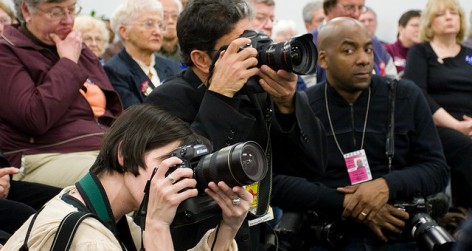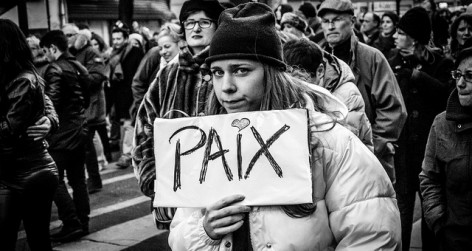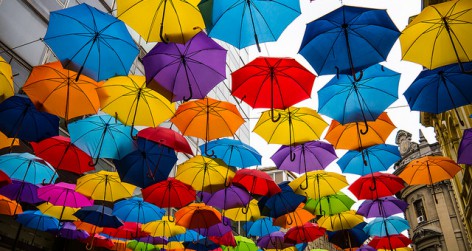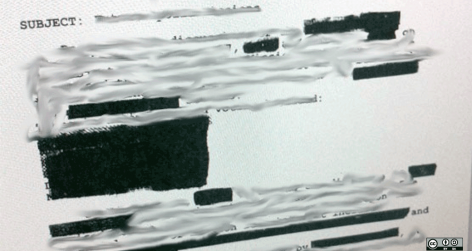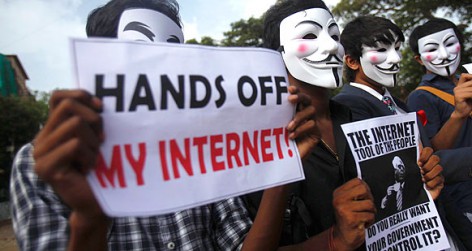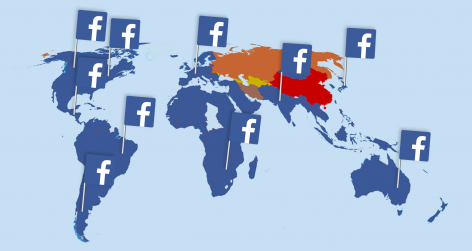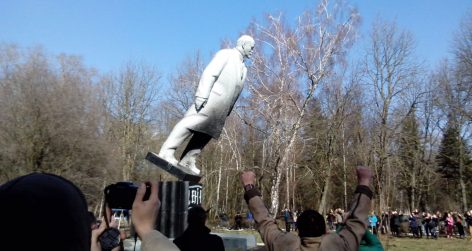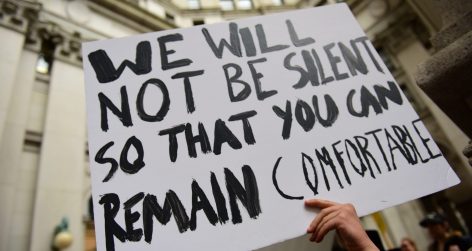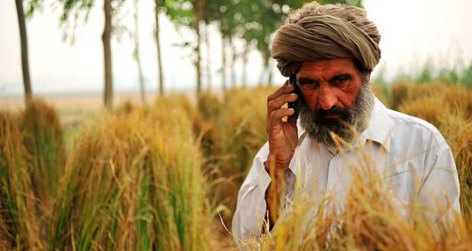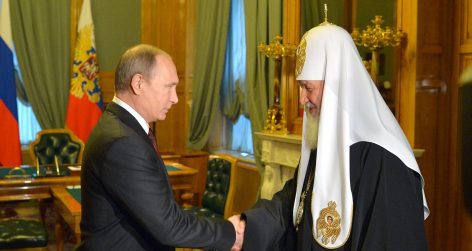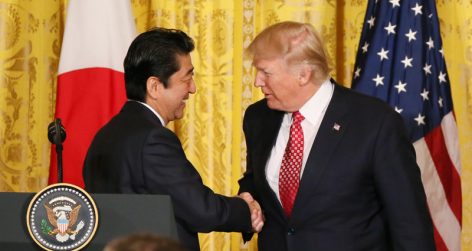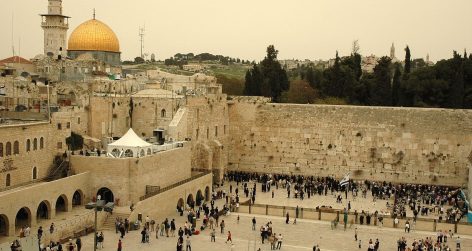Max Gallien contrasts Tahrir Square in 2011 and 2016.

It’s 25 January 2011. There is graffiti on Mohamed Mahmoud Street, mourning the murder of a blogger by the Egyptian police. There are mothers displaying print-outs of photos of their killed sons in the centre of Tahrir Square. Facebook groups, pictures, posts and hashtags making their way from tiny screens onto giant banners in marches and protests. From the beginning, both the use of public space for free expression and its close connection to modern social media were central elements in the imagery surrounding the 2011 revolution in Egypt. They were repeated by journalists and analysts with childlike enthusiasm. “Why not call it a Facebook revolution?” CNN’s Chris Taylor asked, describing the new weapon in the arsenal of the protesters, “a laser beam that bounces off you and your acquaintances with unsurpassed speed”. In the early days of 2011, it looked not only as if a huge amount of space for free expression was opening up in the Middle East, but that this could not be shut down anymore. Digital freedom would fortify the freedom of the street. Tahrir would be patrolled by tweets. “Now imagine you’re a dictator trying to infiltrate those acres of free speech,” Taylor concluded: “Can’t be done.”
25 January 2016. The fifth anniversary of the revolution. For the first time on this occasion, downtown Cairo is almost completely quiet, apart from the vast amounts of military hardware deployed to “secure” the city. The only small groups that have assembled in public spaces are pro-regime activists displaying pictures of Egypt’s president Abdel Fatah al-Sisi. Small gatherings of anti-regime protests are swiftly ended by the police. At least four people lose their lives. The most iconic picture of this day looked strikingly different from those of 2011: Sanaa Seif, the sister of a prominent activist who is one of Egypt’s many political prisoners, walking through the traffic in a street in downtown Cairo: a one woman march, a protest of one. Her slogan, not on a poster, but on the back of her jumper: an infiltration of a public space, which by 2016 clearly does not belong to the people anymore.
The closing of public space for free expression in Egypt has been some years in the making. While in 2012 people from a variety of political backgrounds celebrated the first anniversary of the revolution on Tahrir square, 2013 already saw the supporters of the Muslim Brotherhood at different demonstrations outside of the city centre, with some violent clashes ensuing between different groups. Still, I remember the atmosphere on Tahrir in 2013 as festive, and as a celebration of a space of expression, at the heart of which stood impromptu exhibitions, displays and an ad-hoc “museum of the revolution”. By 2014, this was entirely gone. After the coup – the alleged “second revolution” that put Sisi in power, remembering the first revolution had become contentious and struck at the heart of the shaky legitimacy of the new regime. On 25 January 2014, the demonstrators trying to reach Tahrir square were blocked by security forces. In 2015, only a few even managed to penetrate downtown Cairo. In both years, dozens of protesters lost their lives in confrontations with the police. Celebration was followed by contestation and then repression.
In light of all the attention that had been put on the use of social media and new technologies by activists and in the opening up of new spaces of expression in Egypt, it is worth noting that the tools used to clamp down on these spaces have been both old-fashioned and effective. Yes, the Egyptian state security forces did invest heavily in cyber surveillance technology. But in the lead-up to the recent anniversaries of the revolution more traditional forms of repression appear at the forefront.
Many of the leadership of activist groups that were not yet jailed, such as Mohamed Essam of the Revolutionary Socialists, Taher Mokhtar of the Doctors’ Syndicate and three alleged members of the Muslim Brotherhood, found themselves arrested in the weeks leading up to the anniversary. All of them had called for protests on social media, with the latter three allegedly administering a whopping 47 different Facebook pages between them. They join the large and illustrious ranks of political prisoners in Egypt: draconic anti-terrorism legislation and a “protest law” as well as the criminalisation of the Muslim Brotherhood and activist groups such as the April 6 Movement has given the government scope to jail hundreds of activists, journalists and members of civil society without trial or due process. Many of them are held in Cairo’s Aqrab prison, which has become infamous for its abysmal living conditions, with many detainees starving and freezing in narrow cells, and two prisoners recently having died under questionable circumstances. In the run-up to the anniversary of the revolution, the abilities for families to visit the inmates of Aqrab prison had once again been restricted.
For the journalists who are still allowed to work, life has become more difficult as well. Harassment, intimidation and censorship are commonplace. In 2015 Reporters without Borders’ Press Freedom Index ranked Egypt as Number 158 out of 180 countries. A number of prominent writers and journalists have given up publishing, newspapers have been shut down and a report by the Arabic Network for Human Rights Information details an extensive array of state interferences in the newspapers that are still running. A draft law on journalism in Egypt stipulates a minimum size that news outlets need to achieve in order to receive accreditation – hence pushing citizen journalists and bloggers even more formally into illegality. The unsurprising result is a state-controlled media landscape in which critical voices may be found in little corners and offhand remarks but which is miles away from being able to function as a space for free speech and expression and is primarily directed towards the needs of the regime.
The Egyptian security apparatus has not been able to clamp down entirely on social media. It did not cut off the internet, as the Mubarak government foolishly did in 2011. It did not shut down blogs. But it has arrested many of the bloggers, intimidated their families and loved ones and thereby crippled the movements that helped to carry protest from the chatrooms to the streets of Cairo in 2011. The new technology has not made the activists of the 2011 revolution invincible; it did not separate it from the logics of politics, of division and co-optation, repression and exile. Social media can help activists to organise and coordinate under a repressive regime, but not always and not against all odds.
Perhaps there is another infamous feature of the internet, however, which gives grounds for some optimism: it does not forget. Twitter feeds and archived blogs, Facebook tributes to prisoners and martyrs provide a vast, ever-growing, and easily accessible museum of Egyptian resistance, open for anyone to stroll through, to remember, reflect, regroup and discuss: what went wrong? Just put #jan25 into Twitter, and scrolling down quickly produces all the images, old and new, referenced at the top of the article. And one more: that of an Egyptian policeman, with a bulletproof vest and a big moustache, smiling for the camera. He is holding a pink rose in his right hand, and a gun in his left. Welcome to Cairo, 25 January 2016.
Max Gallien is a former Dahrendorf Scholar at St Antony’s College, Oxford , now writing his doctorate at the London School of Economics
Since the writing of this article, it has become clear that the events of 25 January 2016 claimed another victim. Giulio Regeni, an Italian doctoral student at Cambridge University, was reported missing on that day, and subsequently confirmed to be dead. His body showed signs of torture. The author and Timothy Garton Ash, director of Free Speech Debate, are deeply saddened by the tragic death of a student engaged in academic research in Egypt and join calls by many academics for a thorough investigation of all the circumstances surrounding it. An open letter to President Sisi from the Middle East Studies Association can be read here.

